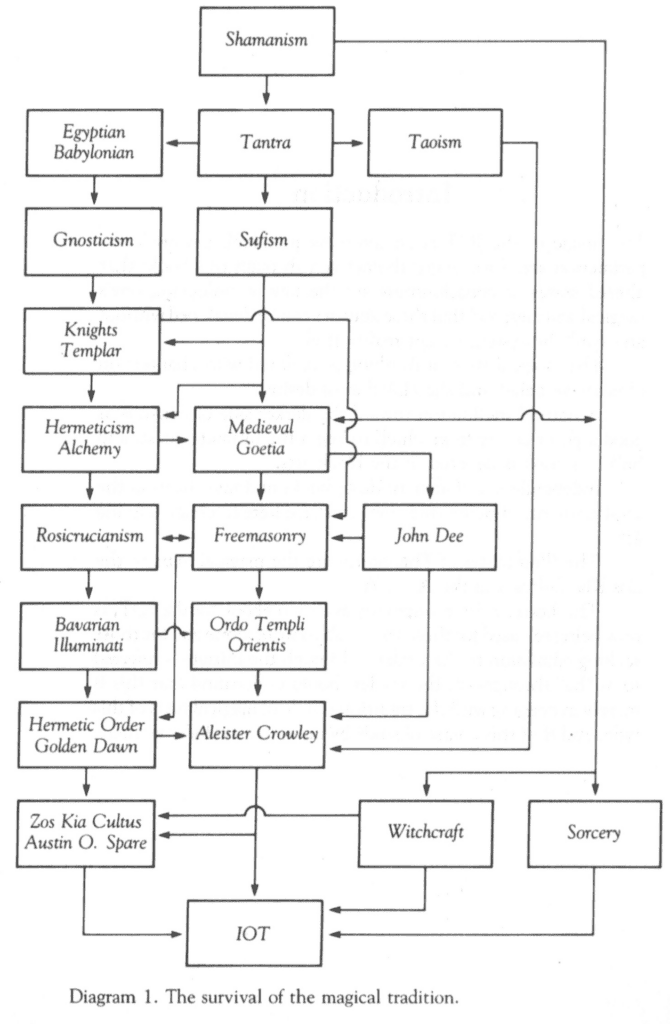Shamanism has existed since the dawn of human consciousness. It has penetrated our culture and influenced our civilization in ways we cannot even begin to understand. Yet, many people are unaware of the monumental contributions of the shaman in our society. In this blog post, we’re going to explore the historical context, mythological archetype, and functional role of the Shaman.
Preface
I’ll go right ahead and say it. My definition of Shamanism is a little bit… eccentric. The same way comparative mythology boils different myths down to their core elements, I want to take a step back and observe how the “profession” of the Shaman was uniquely manifested in different communities and civilizations.
While it’s true that there’s a specific cultural background encompassing shamanism, I find that it’s mostly a matter of semantics. I’ll take a slightly different approach here so bear with me.
One of my earliest spiritual experiences had nothing to do with me. It was something I noticed while I was attending (Orthodox) Church.
Sunday. 8 pm. I think it was a month before Easter and I was 11 years old.
At that point, I didn’t have any sort of practical grasp of what religion was. I’d simply nod and agree to whatever they were telling me. In simple terms, I thought religion was lighting a few candles and listening to priests chant. Basically, it bore no significance in my life.
But that day, something changed. Something profound happened; a woman sought help from one of the priests.
“Hmm… that doesn’t sound interesting at all!”.
Hear me out. I was sitting idly, waiting for the liturgy to wrap up, when I saw a woman approaching one of the attending priests, next to me. I won’t reveal exactly what I heard but she asked to arrange a meeting to discuss a personal problem she had.
And what’s more surprising is that the priest was eager to do so.
From a bureaucratic process, an exoteric system, I started viewing religion as an intimate, personal praxeology that can be applied in our daily, mundane lives.
Eventually, I realized that (some) priests fulfil the role of the modern-day Shaman.
But there’s a caveat…
What is Shamanism?

Right off the bat, there isn’t a universally agreed-upon definition of what Shamanism is. Many scholars disagree with the historical or even functional role of the archetypal “witch-doctor” (another term people don’t agree with).
But there are sets of principles and axioms that can loosely define the beliefs of a Shaman:
From Wiki:
- Spirits exist and they play important roles both in individual lives and in human society
- The shaman can communicate with the spirit world
- Spirits can be benevolent or malevolent
- The shaman can treat sickness caused by malevolent spirits
- The shaman can employ trances inducing techniques to incite visionary ecstasy and go on vision quests
- The shaman’s spirit can leave the body to enter the supernatural world to search for answers
- The shaman evokes animal images as spirit guides, omens, and message-bearers
You’ll notice that spiritism, which is a modern interpretation of animism, is at the core of all Shamanic practices. That has to do with the persistent view that Shamanism is limited in very specific spiritual practices of different indigenous populations.
Yet, in my option, the above is a product of a black and white view of modern history. I believe that we can trace back the same kind of formulaic beliefs to ancient Sumer, Egypt, India, etc.
Shamanic Initiation Rituals
The mythology of the early Babylonian, Egyptian, Christian and Greek mythology talks about a Journey to the underworld.
Whether it’s the descent of Persephone, the Temple of Osiris or the resurrection of Jesus Christ, there’s a parallel tradition describing the cycle of death and rebirth.
This underground stream of knowledge has been running in the background of all Shamanic practices. But each civilization dressed it up in the veil of their specific culture.
I’d argue that the earliest, systemized approach began in the upper echelons of the Egyptian royalty, where the King underwent esoteric training by the High Priestess. This included visualization, hypnosis, dreamwork, and meditation, preparing them for an initiation ritual.
Initiation to what, you might ask. Well, that’s up for debate. From what I’ve read, I believe that their ultimate purpose was apotheosis; becoming Gods.
Which is supported by the belief of ancient Egyptians that the Pharaoh were literally divine beings!
Even though we don’t know the specifics of that process, its echo can be heard in the work of modern psychology. I’ll explain.
From Egypt to Jung
This is quite the gap to cover in a few paragraphs but I’ll try my best.
At some point in prehistory, the secrets of initiation escaped the court of Kings and Queens. Now, the common folk had access to practices like magic, alchemy, and divination.
When the Greeks arrived, they found a free flow of ideas regarding the cosmos, which they readily adopted. But the issue is, what was once a unified theory, a Great Science, was fractured – becoming incomplete.
A syncretic form of prehistoric philosophy emerged, called Hermeticism.
(If you’re interested in hearing more about this subject, leave a comment below)
But that’s not important at the moment. What you should be aware of is that during the Crusades, the Western world brought back these traditions and Christianized them.
We’ve incorporated them into our culture and beliefs (see the tradition of Coronation, for example).
One specific branch of Hermeticism — laboratory alchemy — became particularly popular because it promised gold and eternal life. But for many years, we missed a key element: it was an allegory.
Jung masterfully broke down the symbolism of the spagyric process and made the case that alchemy means internal transformation. An internal death and rebirth, illuminating the unconscious with the light of the conscious.
The True Purpose of the Shaman
So, where does Shamanism fit in all of this?
It’s simple really. Remember how I said each culture covers these timeless traditions under their mantle, yet the mechanism – the technology – remains the same?
That’s the case with Shamanism as well! I’d argue that it’s Shamanism that spawned all of the rest, we just happened to refine and fit them in a box called “religion” and dogma.

On a local level, the Shaman is the healer. Healer of soul and body. He’s the mentor to the mentees. The initiator to the initiates.
It’s the druid, the witch, the wise woman at the edge of the forest.
Through various practices, including vision quests, ecstatic dances, and the use of entheogens, the Shaman travels to the underworld to gain insight into the sickness of an individual. He then can heal or guide them.
Like the priest I mentioned in the introduction, this man or woman is the local healer.
The Dark Side of Shamanism
Unfortunately, modernity tends to commodify all genuine spiritual expressions.
What people call “spiritual tourism” is the habit of travelling to various countries and cultures, and with the use of “magic mushrooms” or ayahuasca trip and go into these journeys.
The problem here is that most individuals do not possess the necessary training to handle these powerful experiences in a meaningful way. In many cases, they provide a sense of well being for a few weeks or even heal trauma. But on a superficial level.
And that has to do with lack of structure and narrative.
I’ve mentioned this in previous posts but mythology is your personal story. It’s how you interact with the world and how the world interacts with you. It’s the expression of your psyche.
Ancient mysteries recognized this notion so they leveraged the power of storytelling to guide the initiates through a dramatized ritual (pertaining to a myth). This provided a step-by-step process that didn’t mystify the zealot.
Instead, it creates a clear path you could walk on when these entheogens kicked in.
(A perfect example is the Eleusinian Mysteries. It is said that 3000 Greeks would participate in a dithyrambic ritual where they dramatized the abduction of Persephone from Hades and their descent to the Underworld. And they used kykeon – a hallucinogenic concoction).
Shamanism vs Psychology
The distinction isn’t always clear, in my opinion. There’s so much overlap that the only thing differentiating the two is the name of the tools they use.
Of course, a psychologist is more concerned with the mundane aspects of your internal world while the shaman seeks the exaltation of your soul. But at the end of the day, the journey begins and ends at the same points.
Jungian psychology specifically is closer to shamanism than other branches of psychoanalysis. The technique of “active imagination” produces similar results with the traditional, ecstatic rituals of Shamans; visualization is a powerful technique.
Another interesting technique employed by both shamans and psychologists is hypnosis and lucid dreaming. In both cases, you bring your attention inwards.
Lucid dreaming, in particular, can be considered the most intuitive “journey within”, since you’re quite literally journeying in the darkest pits of your subconscious.
(And we happen to have a short ebook guide you can use to learn to lucid dream for free!)
Beyond the Bounds of your Consciousness
“Life lived in the absence of the psychedelic experience that primordial shamanism is based on is life trivialized, life denied, life enslaved to the ego.”
I hope this was a good introductory post on the nature of shamanism and how I view the lost art in relation to ancient mythology and modern psychology.
If you want to deepen your understanding, I think these 5 books will help:
